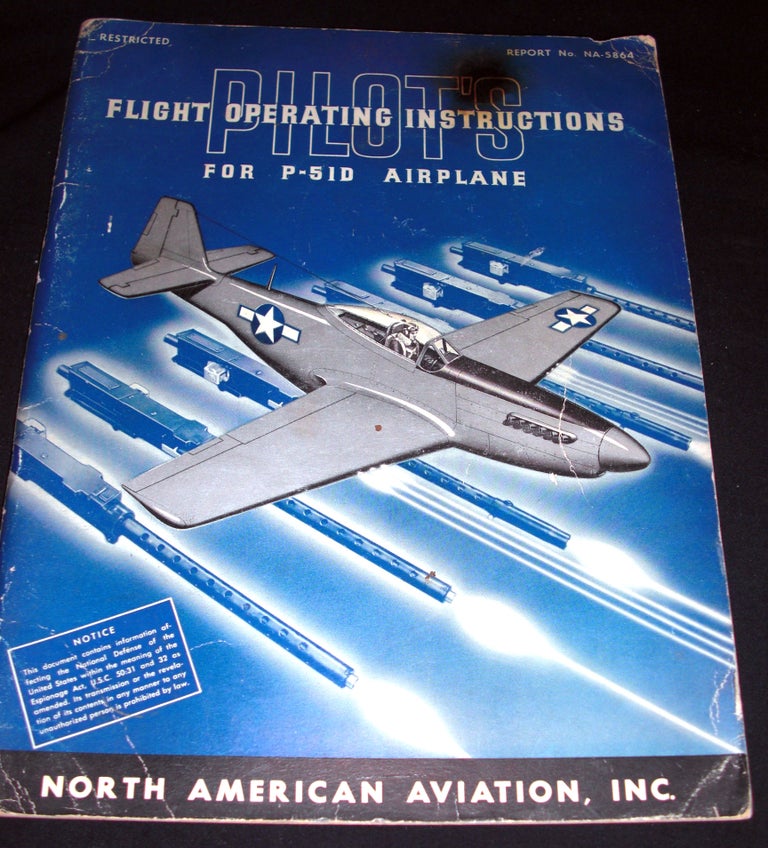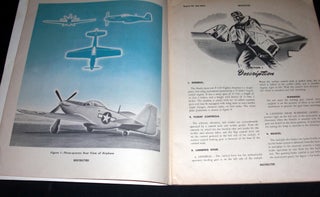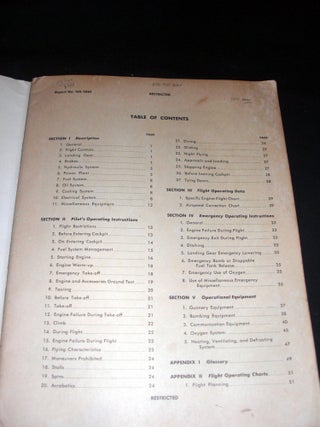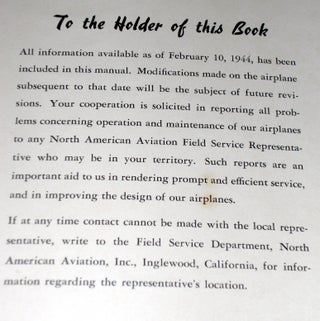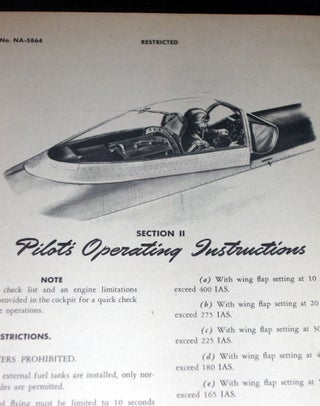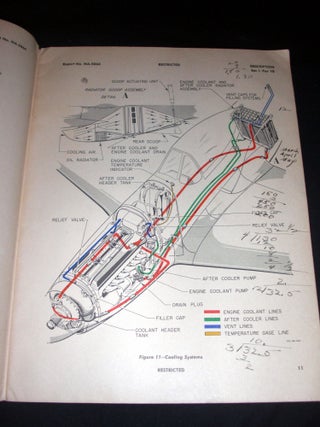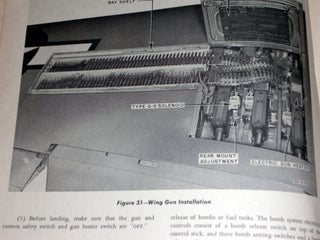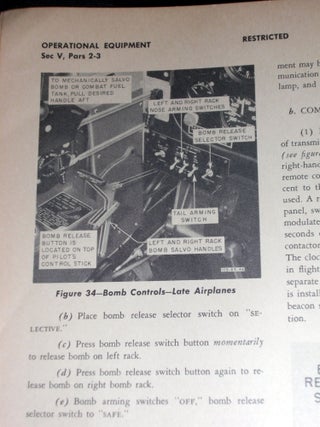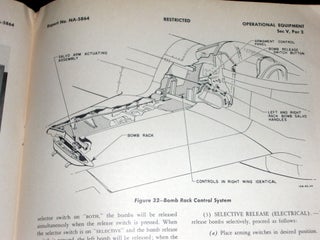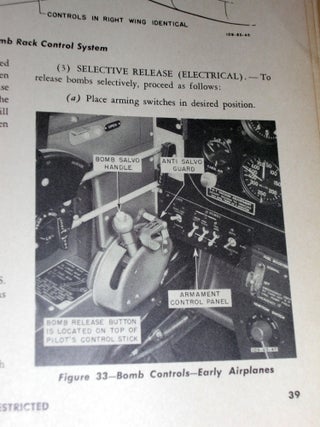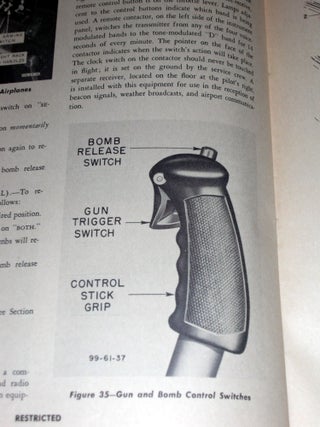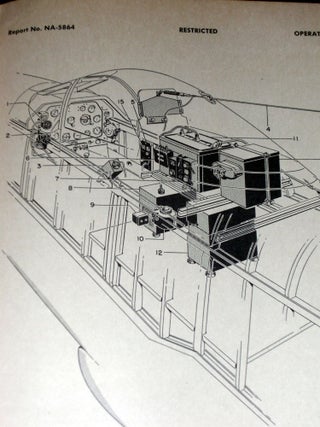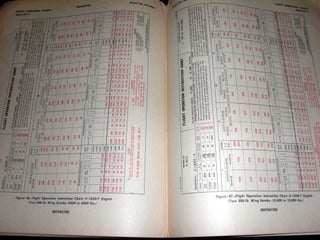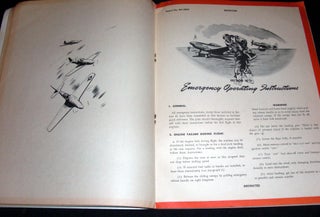Pilot's Flight Operation Instructions for the P-51D Airplane.
North American Aviation, Inc., 1944. Classified "Restricted" and marked as such on each page. Report No. NA-5864. Profusely illustrated with photographs, drawings, maps, diagrams, charts, etc. 68 pps. Thin 4to. Bound in stiff pictorial wrappers.
The P-51 Mustang was,with little argument, the single greatest American Fighter Aircraft of World War 2. The sleek, low winged Mustang was among the very first to use a laminar-flow wing, which resulted in far less drag. Also, the P-51 had its wingtips, rudder, and elevators with square-cut ends, unlike almost every other aircraft at the time. It paid off, as the P-51 could reach 380mph while the lighter Spitfire, with half as much fuel weight, could not get within 15mph of that figure. The P-51 Mustang, designed in 1940 after Great Britain requested that North American build P-40 Warhawks for the Royal Air Force, was at first ignored by U. S. officials. However, the design showed such promise that in 1941 the Army Air Forces took delivery of P-51A's powered by the Allison V-1710 engine. These early Mustangs were restricted to reconnaissance and ground attack due to the limited performance of the Allison engines. Tests in 1942 with the Roll-Royce "Merlin" engine showed a marked increase in performance. By the end of 1943, Merlin powered P-51Bs entered combat with the 354th Fighter Group in England. Eighth Air Force Mustangs provided long range escort to B-17s and B-24s and scored heavily over German interceptors. By the war's end, P-51s had destroyed 4,950 enemy aircraft in the air, more than any other U. S. fighter in Europe. Mustangs served in nearly every active combat zone, including the Pacific where they escorted B-29s from Iwo Jima to Japan. Between 1941 and 1945, the Army Air Force ordered 14,855 Mustangs. During the Korean Conflict, P-51's were used primarily for close support of ground forces until withdrawn from combat in 1953. P-51s served with Reserve and National Guard units until 1957.
Small blemish to front cover. Front and rear covers present various usual creasing and wear to edges. A patch or two of foxing to inside front cover.Small binding crease at top of gutter throughout. Several scattered annotations. A tad musty. A sound, crisp very rare wartime issue.
Item #8790
Price: $1,250.00

